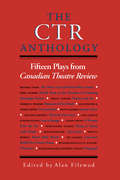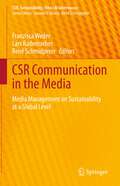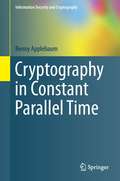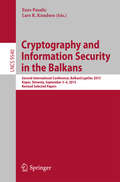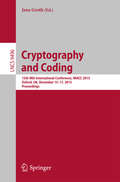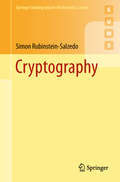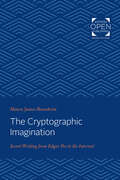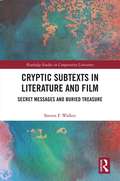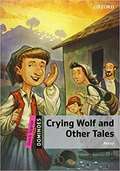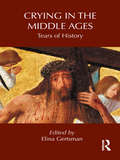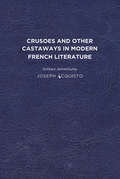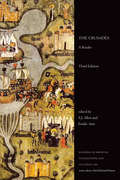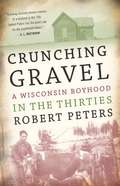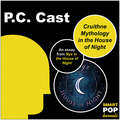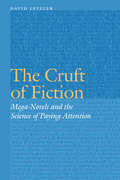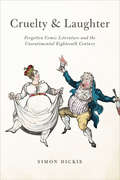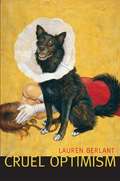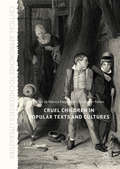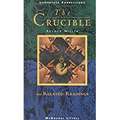- Table View
- List View
The CTR Anthology
by Alan FilewodSince its inception in 1974, "Canadian Theatre Review" has been one of the most important publishers of new Canadian plays. With a script in each issue, CTR has introduced new writers and advocated new approaches to Canadian drama. This volume brings together fifteen of the most significant plays published in CTR between 1974 and 1991. Most have been out of print since their appearance in the journal. They include recognized classics that have transformed Canadian theatre, such as "Ten Lost Years" and "This is for You, Anna," and lesser-known plays by such major writers as Robert Lepage and George F. Walker. Taken together these plays not only expand the boundaries of Canadian drama; they also document an important and exciting period in Canadian theatre. They are vivid testaments to the diversity of contemporary theatrical practice in Canada.
CSR Communication in the Media: Media Management on Sustainability at a Global Level (CSR, Sustainability, Ethics & Governance)
by Franzisca Weder Lars Rademacher René SchmidpeterCorporate social responsibility (CSR) is an established management focus of today's companies and organizations of different types, scope and size. Communication practices on CSR and sustainability in the media industry, related theoretical concepts, and empirical foundations have not yet been sufficiently explored. This book focuses on a new normative framework of sustainability, bridging the established debate on public value with the current debate on social impact and the social license to operate in the media industry. With a variety of contributions from theory and practice, the book addresses the dual nature of media and media companies, which simultaneously produce economic and cultural goods and thus bear a "double responsibility": on the one hand, for the way they present reality, monitor and criticize economic and political developments, and bring ethical concerns to the public debate. On the other hand, they bear responsibility for their own activities as companies (license to operate). The book is therefore aimed at readers interested in the journalistic perspective and at executives in the media industry.
Crystallized Memories: Award Winning Telugu Essays
by Cekuri Rama Rao M. V. Chalapathi RaoCrystallized Memories is the translation of Chekuri Rama Rao's Smriti Kinankam.
A Cryptography Primer
by Philip N. KleinCryptography has been employed in war and diplomacy from the time of Julius Caesar. In our Internet age, cryptography's most widespread application may be for commerce, from protecting the security of electronic transfers to guarding communication from industrial espionage. This accessible introduction for undergraduates explains the cryptographic protocols for achieving privacy of communication and the use of digital signatures for certifying the validity, integrity, and origin of a message, document, or program. Rather than offering a how-to on configuring web browsers and e-mail programs, the author provides a guide to the principles and elementary mathematics underlying modern cryptography, giving readers a look under the hood for security techniques and the reasons they are thought to be secure.
Cryptography in Constant Parallel Time (Information Security and Cryptography)
by Benny ApplebaumLocally computable (NC0) functions are "simple" functions for which every bit of the output can be computed by reading a small number of bits of their input. The study of locally computable cryptography attempts to construct cryptographic functions that achieve this strong notion of simplicity and simultaneously provide a high level of security. Such constructions are highly parallelizable and they can be realized by Boolean circuits of constant depth. This book establishes, for the first time, the possibility of local implementations for many basic cryptographic primitives such as one-way functions, pseudorandom generators, encryption schemes and digital signatures. It also extends these results to other stronger notions of locality, and addresses a wide variety of fundamental questions about local cryptography. The author's related thesis was honorably mentioned (runner-up) for the ACM Dissertation Award in 2007, and this book includes some expanded sections and proofs, and notes on recent developments. The book assumes only a minimal background in computational complexity and cryptography and is therefore suitable for graduate students or researchers in related areas who are interested in parallel cryptography. It also introduces general techniques and tools which are likely to interest experts in the area.
Cryptography and Secure Communication
by Richard E. BlahutToday's pervasive computing and communications networks have created an intense need for secure and reliable cryptographic systems. Bringing together a fascinating mixture of topics in engineering, mathematics, computer science, and informatics, this book presents the timeless mathematical theory underpinning cryptosystems both old and new. Major branches of classical and modern cryptography are discussed in detail, from basic block and stream cyphers through to systems based on elliptic and hyperelliptic curves, accompanied by concise summaries of the necessary mathematical background. Practical aspects such as implementation, authentication and protocol-sharing are also covered, as are the possible pitfalls surrounding various cryptographic methods. Written specifically with engineers in mind, and providing a solid grounding in the relevant algorithms, protocols and techniques, this insightful introduction to the foundations of modern cryptography is ideal for graduate students and researchers in engineering and computer science, and practitioners involved in the design of security systems for communications networks.
Cryptography and Information Security in the Balkans: Second International Conference, BalkanCryptSec 2015, Koper, Slovenia, September 3-4, 2015, Revised Selected Papers (Lecture Notes in Computer Science #9540)
by Enes Pasalic Lars R. KnudsenThis book contains revised selected papers fromthe Second International Conference on Cryptology and Information Security inthe Balkans, BalkanCryptSec 2015, held in Koper, Slovenia, in September 2015. The 12 papers presented inthis volume were carefully reviewed and selected from 27 submissions. They areorganized in topical sections named: symmetric key cryptography; cryptanalysis;security and protocols; and implementation and verifiable encryption.
Cryptography and Coding: 15th IMA International Conference, IMACC 2015, Oxford, UK, December 15-17, 2015. Proceedings (Lecture Notes in Computer Science #9496)
by Jens GrothThis book constitutes the proceedings of the 15th IMA International Conference on Cryptography and Coding, IMACC 2015, held at Oxford, UK, in December 2015. The 18 papers presented together with 1 invited talk were carefully reviewed and selected from 36 submissions. The scope of the conference was on following topics: authentication, symmetric cryptography, 2-party computation, codes, Boolean functions, information theory, and leakage resilience.
Cryptography: A Very Short Introduction
by Fred Piper Sean MurphyProvide information about cryptography, gives tips and techniques.
Cryptography (Springer Undergraduate Mathematics Ser.)
by Simon Rubinstein-SalzedoThis text introduces cryptography, from its earliest roots to cryptosystems used today for secure online communication.Beginning with classical ciphers and their cryptanalysis, this book proceeds to focus on modern public key cryptosystems such as Diffie-Hellman, ElGamal, RSA, and elliptic curve cryptography with an analysis of vulnerabilities of these systems and underlying mathematical issues such as factorization algorithms. Specialized topics such as zero knowledge proofs, cryptographic voting, coding theory, and new research are covered in the final section of this book.Aimed at undergraduate students, this book contains a large selection of problems, ranging from straightforward to difficult, and can be used as a textbook for classes as well as self-study. Requiring only a solid grounding in basic mathematics, this book will also appeal to advanced high school students and amateur mathematicians interested in this fascinating and topical subject.
The Cryptographic Imagination: Secret Writing from Edgar Poe to the Internet (Parallax: Re-visions of Culture and Society)
by Shawn James RosenheimOriginally published in 1996. In The Cryptographic Imagination, Shawn Rosenheim uses the writings of Edgar Allan Poe to pose a set of questions pertaining to literary genre, cultural modernity, and technology. Rosenheim argues that Poe's cryptographic writing—his essays on cryptography and the short stories that grew out of them—requires that we rethink the relation of poststructural criticism to Poe's texts and, more generally, reconsider the relation of literature to communication. Cryptography serves not only as a template for the language, character, and themes of much of Poe's late fiction (including his creation, the detective story) but also as a "secret history" of literary modernity itself. "Both postwar fiction and literary criticism," the author writes, "are deeply indebted to the rise of cryptography in World War II." Still more surprising, in Rosenheim's view, Poe is not merely a source for such literary instances of cryptography as the codes in Conan Doyle's "The Dancing-Men" or in Jules Verne, but, through his effect on real cryptographers, Poe's writing influenced the outcome of World War II and the development of the Cold War. However unlikely such ideas sound, The Cryptographic Imagination offers compelling evidence that Poe's cryptographic writing clarifies one important avenue by which the twentieth century called itself into being. "The strength of Rosenheim's work extends to a revisionistic understanding of the entirety of literary history (as a repression of cryptography) and then, in a breathtaking shift of register, interlinks Poe's exercises in cryptography with the hyperreality of the CIA, the Cold War, and the Internet. What enables this extensive range of applications is the stipulated tension Rosenheim discerns in the relationship between the forms of the literary imagination and the condition of its mode of production. Cryptography, in this account, names the technology of literary production—the diacritical relationship between decoding and encoding—that the literary imagination dissimulates as hieroglyphics—the hermeneutic relationship between a sign and its content."—Donald E. Pease, Dartmouth College
Cryptic Subtexts in Literature and Film: Secret Messages and Buried Treasure
by Steven F WalkerOne of the primary objectives of comparative literature is the study of the relationship of texts, also known as intertextuality, which is a means of contextualizing and analyzing the way literature grows and flourishes through inspiration and imitation, direct or indirect. When the inspiration and imitation is direct and obvious, the study of this rapport falls into the more restricted category of hypertextuality. What the author has labeled a cryptic subtext, however, is an extreme case of hypertextuality. It involves a series of allusions to another text that have been deliberately inserted by the author into the primary text as potential points of reference. This book takes a deep dive into a broad array of literature and film to explore these allusions and the hidden messages therein.
Crying Wolf and Other Tales
by Hardy-Gould JanetCrying Wolf (Part 1 & 2); The Goose with the Golden Eggs (Part 1 & 2); The Bear and the Two Travelers (Part 1 & 2).
Crying in the Middle Ages: Tears of History (Routledge Studies in Medieval Religion and Culture)
by Elina GertsmanSacred and profane, public and private, emotive and ritualistic, internal and embodied, medieval weeping served as a culturally charged prism for a host of social, visual, cognitive, and linguistic performances. Crying in the Middle Ages addresses the place of tears in Jewish, Christian, and Islamic cultural discourses, providing a key resource for scholars interested in exploring medieval notions of emotion, gesture, and sensory experience in a variety of cultural contexts. Gertsman brings together essays that establish a series of conversations with one another, foregrounding essential questions about the different ways that crying was seen, heard, perceived, expressed, and transmitted throughout the Middle Ages. In acknowledging the porous nature of visual and verbal evidence, this collection foregrounds the necessity to read language, image, and experience together in order to envision the complex notions of medieval crying.
Crusoes and Other Castaways in Modern French Literature: Solitary Adventures
by Joseph AcquistoCrusoes and Other Castaways in Modern French Literature: Solitary Adventures by Joseph Acquisto examines the many ways in which the castaway, particularly in the form of engagement with Robinson Crusoe, has been reinterpreted and appropriated in nineteenth through twenty-first century French literature. The book is not merely a literary history of the robinsonnade in France; rather, Acquisto demonstrates how what he calls the genre of “solitary adventure” becomes a vehicle for exploration of much larger questions about the reception of texts, modes of reading, and the relationship between popular and serious literary traditions. The heart of Crusoes and Other Castaways in Modern French Literature examines a crucial moment in the late nineteenth and early twentieth centuries when the history of cultural perspectives on reading and solitude intersect, catalyzing a reconsideration of Defoe’s tale. Acquisto’s philosophically inflected readings of works by writers from Rousseau to Balzac, Verne to Gide, Valéry to Tournier enhance intertextual and cultural approaches to the castaway myth and broaden our appreciation of the dynamic relation it has to modern French literature writ large. Published by University of Delaware Press. Distributed worldwide by Rutgers University Press.
The Crusades: A Reader, Third Edition (Readings in Medieval Civilizations and Cultures #VIII)
by S. J. Allen Emilie AmtSince its first appearance in 2004, The Crusades: A Reader has been the go-to sourcebook in the field. S.J. Allen and Emilie Amt cover the entire crusading movement, from its origins to its modern afterlife, using key primary source documents. The third edition features a new introduction that includes a guide for students on how to use the book. The editors have also added more content on women, material culture, Jewish and Byzantine perspectives, Muslim-Crusader interactions, and modern use of Crusade imagery and rhetoric by the Far Right. The geographic range is broad, covering not only Crusades in the Middle East, but also in Spain and in northern Europe and against European heretics. While scholarship, courses, and textbooks on the Crusades have proliferated over the past twenty years, The Crusades: A Reader remains the only comprehensive, up-to-date, and in-print sourcebook available on the subject.
Crunching Gravel: A Wisconsin Boyhood in the Thirties
by Robert PetersNo nostalgic tale of the good old days, Robert Peters’s recollections of his adolescence vividly evoke the Depression on a hardscrabble farm near Eagle River: Dad driving the Vilas County Relief truck, Lars the Swede freezing to death on his porch, the embarassment of graduation in a suit from welfare. The hard efforts to put fish and potatoes and blueberries on the table are punctuated by occasional pleasures: the Memorial Day celebration, swimming at Perch Lake, the county fair with Mother’s prizes for jam and the exotic delights of the midway. Peters’s clear-eyed memoir reveals a poet’s eye for rich and stark detail even as a boy of twelve. “Peters misses nothing, from the details of the town’s Fourth of July celebration to the cause and effect of a young cousin’s suicide to the calibrations of racism toward Indians that was so acceptable then. It is a fascinating, unsentimental look at a piece of our past. ”—Margaret E. Guthrie,New York Times Book Review “It’s unlikely that any other contemporary poet and scholar as distinguished has risen from quite so humble beginnings as Robert Peters. Born and raised by semiliterate parents on a subsistence farm in northeastern Wisconsin, Peters lived harrowingly close to the eventual stuff of his poetry—the dependency of humans on animal lives, the inexplicable and ordinary heroism and baseness of people facing extreme conditions, the urgency of physical desire. . . . Sterling childhood memoirs. ”—Booklist “Robert Peters has written a memoir exemplary because he insists on the specific, on the personal and the local. It is also enormously satisfying to read, and it is among the most authentic accounts of childhood and youth I know—a Wisconsin David Copperfield!”—Thom Gunn
Cruithne Mythology and the House of Night
by Pc CastFrom Nyx in the House of Night: Mythology, Folklore, and Religion in the P.C. and Kristin Cast Vampyre Series: P.C. Cast relates her inspiration for the setting of the House of Night and how Scottish and Irish history are woven into the series.
The Cruft of Fiction: Mega-Novels and the Science of Paying Attention (Frontiers of Narrative)
by David LetzlerA 2017 Choice Outstanding Academic Title What is the strange appeal of big books? The mega-novel, a genre of erudite tomes with encyclopedic scope, has attracted wildly varied responses, from fanatical devotion to trenchant criticism. Looking at intimidating mega-novel masterpieces from The Making of Americans to 2666, David Letzler explores reader responses to all the seemingly random, irrelevant, pointless, and derailing elements that comprise these mega-novels, elements that he labels “cruft” after the computer science term for junk code. In The Cruft of Fiction, Letzler suggests that these books are useful tools to help us understand the relationship between reading and attention.While mega-novel text is often intricately meaningful or experimental, sometimes it is just excessive and pointless. On the other hand, mega-novels also contain text that, though appearing to be cruft, turns out to be quite important. Letzler posits that this cruft requires readers to develop a sophisticated method of attentional modulation, allowing one to subtly distinguish between text requiring focused attention and text that must be skimmed or even skipped to avoid processing failures. The Cruft of Fiction shows how the attentional maturation prompted by reading mega-novels can help manage the information overload that increasingly characterizes contemporary life.
Cruelty & Laughter: Forgotten Comic Literature and the Unsentimental Eighteenth Century
by Simon DickieEighteenth-century British culture is often seen as polite and sentimental—the creation of an emerging middle class. Simon Dickie disputes these assumptions in Cruelty and Laughter, a wildly enjoyable but shocking plunge into the forgotten comic literature of the age. Beneath the surface of Enlightenment civility, Dickie uncovers a rich vein of cruel humor that forces us to recognize just how slowly ordinary human sufferings became worthy of sympathy.Delving into an enormous archive of comic novels, jestbooks, farces, variety shows, and cartoons, Dickie finds a vast repository of jokes about cripples, blind men, rape, and wife-beating. Epigrams about syphilis and scurvy sit alongside one-act comedies about hunchbacks in love. He shows us that everyone—rich and poor, women as well as men—laughed along. In the process, Dickie also expands our understanding of many of the century’s major authors, including Samuel Richardson, Lady Mary Wortley Montagu, Tobias Smollett, Frances Burney, and Jane Austen. He devotes particular attention to Henry Fielding’s Joseph Andrews, a novel that reflects repeatedly on the limits of compassion and the ethical problems of laughter. Cruelty and Laughter is an engaging, far-reaching study of the other side of culture in eighteenth-century Britain.
Cruelty and Laughter: Forgotten Comic Literature and the Unsentimental Eighteenth Century
by Simon DickieEighteenth-century British culture is often seen as polite and sentimental--the creation of an emerging middle class. Simon Dickie disputes these assumptions in Cruelty and Laughter, a wildly enjoyable but shocking plunge into the forgotten comic literature of the age. Beneath the surface of Enlightenment civility, Dickie uncovers a rich vein of cruel humor that forces us to recognize just how slowly ordinary human sufferings became worthy of sympathy. Delving into an enormous archive of comic novels, jestbooks, farces, variety shows, and cartoons, Dickie finds a vast repository of jokes about cripples, blind men, rape, and wife-beating. Epigrams about syphilis and scurvy sit alongside one-act comedies about hunchbacks in love. He shows us that everyone--rich and poor, women as well as men--laughed along. In the process, Dickie also expands our understanding of many of the century's major authors, including Samuel Richardson, Lady Mary Wortley Montagu, Tobias Smollett, Frances Burney, and Jane Austen. He devotes particular attention to Henry Fielding's Joseph Andrews, a novel that reflects repeatedly on the limits of compassion and the ethical problems of laughter. Cruelty and Laughter is an engaging, far-reaching study of the other side of culture in eighteenth-century Britain.
Cruel Optimism
by Lauren BerlantA relation of cruel optimism exists when something you desire is actually an obstacle to your flourishing. Offering bold new ways of conceiving the present, Lauren Berlant describes the cruel optimism that has prevailed since the 1980s, as the social-democratic promise of the postwar period in the United States and Europe has retracted. People have remained attached to unachievable fantasies of the good life--with its promises of upward mobility, job security, political and social equality, and durable intimacy--despite evidence that liberal-capitalist societies can no longer be counted on to provide opportunities for individuals to make their lives "add up to something."Arguing that the historical present is perceived affectively before it is understood in any other way, Berlant traces affective and aesthetic responses to the dramas of adjustment that unfold amid talk of precarity, contingency, and crisis. She suggests that our stretched-out present is characterized by new modes of temporality, and she explains why trauma theory--with its focus on reactions to the exceptional event that shatters the ordinary--is not useful for understanding the ways that people adjust over time, once crisis itself has become ordinary. Cruel Optimism is a remarkable affective history of the present.
Cruel Children in Popular Texts and Cultures (Critical Approaches to Children's Literature)
by Monica Flegel Christopher ParkesThis book explores how alarmist social discourses about 'cruel' young people fail to recognize the complexity of cruelty and the role it plays in child agency. Examining representations of cruel young people in popular texts and popular culture, the collected essays demonstrate how gender, race, and class influence who gets labeled 'cruel' and which actions are viewed as negative, aggressive, and disruptive. It shows how representations of cruel young people negotiate the violence that shadows polite society, and how narratives of cruelty and aggression are used to affirm, or to deny, young people’s agency.
The Crucible of Language
by Vyvyan EvansFrom the barbed, childish taunt on the school playground, to the eloquent sophistry of a lawyer prising open a legal loophole in a court of law, meaning arises each time we use language to communicate with one another. How we use language - to convey ideas, make requests, ask a favour, and express anger, love or dismay - is of the utmost importance; indeed, linguistic meaning can be a matter of life and death. In The Crucible of Language, Vyvyan Evans explains what we know, and what we do, when we communicate using language; he shows how linguistic meaning arises, where it comes from, and the way language enables us to convey the meanings that can move us to tears, bore us to death, or make us dizzy with delight. Meaning is, he argues, one of the final frontiers in the mapping of the human mind.
The Crucible
by McDougal-Littell Publishing StaffA textbook reader for young adults features Arthur Miller's "The Crucible," plus short stories, poems, and essays designed to build reading comprehension.
